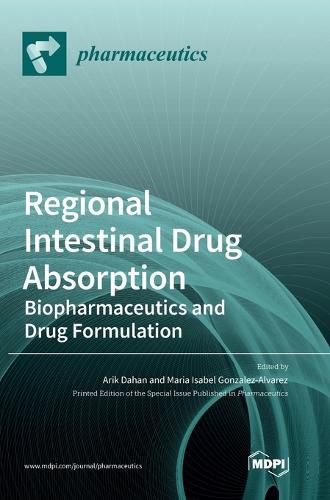Readings Newsletter
Become a Readings Member to make your shopping experience even easier.
Sign in or sign up for free!
You’re not far away from qualifying for FREE standard shipping within Australia
You’ve qualified for FREE standard shipping within Australia
The cart is loading…






This title is printed to order. This book may have been self-published. If so, we cannot guarantee the quality of the content. In the main most books will have gone through the editing process however some may not. We therefore suggest that you be aware of this before ordering this book. If in doubt check either the author or publisher’s details as we are unable to accept any returns unless they are faulty. Please contact us if you have any questions.
The gastrointestinal tract (GIT) can be broadly divided into several regions: the stomach, the small intestine (which is subdivided to duodenum, jejunum, and ileum), and the colon. The conditions and environment in each of these segments, and even within the segment, are dependent on many factors, e.g., the surrounding pH, fluid composition, transporters expression, metabolic enzymes activity, tight junction resistance, different morphology along the GIT, variable intestinal mucosal cell differentiation, changes in drug concentration (in cases of carrier-mediated transport), thickness and types of mucus, and resident microflora. Each of these variables, alone or in combination with others, can fundamentally alter the solubility/dissolution, the intestinal permeability, and the overall absorption of various drugs. This is the underlying mechanistic basis of regional-dependent intestinal drug absorption, which has led to many attempts to deliver drugs to specific regions throughout the GIT, aiming to optimize drug absorption, bioavailability, pharmacokinetics, and/or pharmacodynamics. In the book Regional Intestinal Drug Absorption: Biopharmaceutics and Drug Formulation we aim to highlight the current progress and to provide an overview of the latest developments in the field of regional-dependent intestinal drug absorption and delivery, as well as pointing out the unmet needs of the field.
$9.00 standard shipping within Australia
FREE standard shipping within Australia for orders over $100.00
Express & International shipping calculated at checkout
This title is printed to order. This book may have been self-published. If so, we cannot guarantee the quality of the content. In the main most books will have gone through the editing process however some may not. We therefore suggest that you be aware of this before ordering this book. If in doubt check either the author or publisher’s details as we are unable to accept any returns unless they are faulty. Please contact us if you have any questions.
The gastrointestinal tract (GIT) can be broadly divided into several regions: the stomach, the small intestine (which is subdivided to duodenum, jejunum, and ileum), and the colon. The conditions and environment in each of these segments, and even within the segment, are dependent on many factors, e.g., the surrounding pH, fluid composition, transporters expression, metabolic enzymes activity, tight junction resistance, different morphology along the GIT, variable intestinal mucosal cell differentiation, changes in drug concentration (in cases of carrier-mediated transport), thickness and types of mucus, and resident microflora. Each of these variables, alone or in combination with others, can fundamentally alter the solubility/dissolution, the intestinal permeability, and the overall absorption of various drugs. This is the underlying mechanistic basis of regional-dependent intestinal drug absorption, which has led to many attempts to deliver drugs to specific regions throughout the GIT, aiming to optimize drug absorption, bioavailability, pharmacokinetics, and/or pharmacodynamics. In the book Regional Intestinal Drug Absorption: Biopharmaceutics and Drug Formulation we aim to highlight the current progress and to provide an overview of the latest developments in the field of regional-dependent intestinal drug absorption and delivery, as well as pointing out the unmet needs of the field.